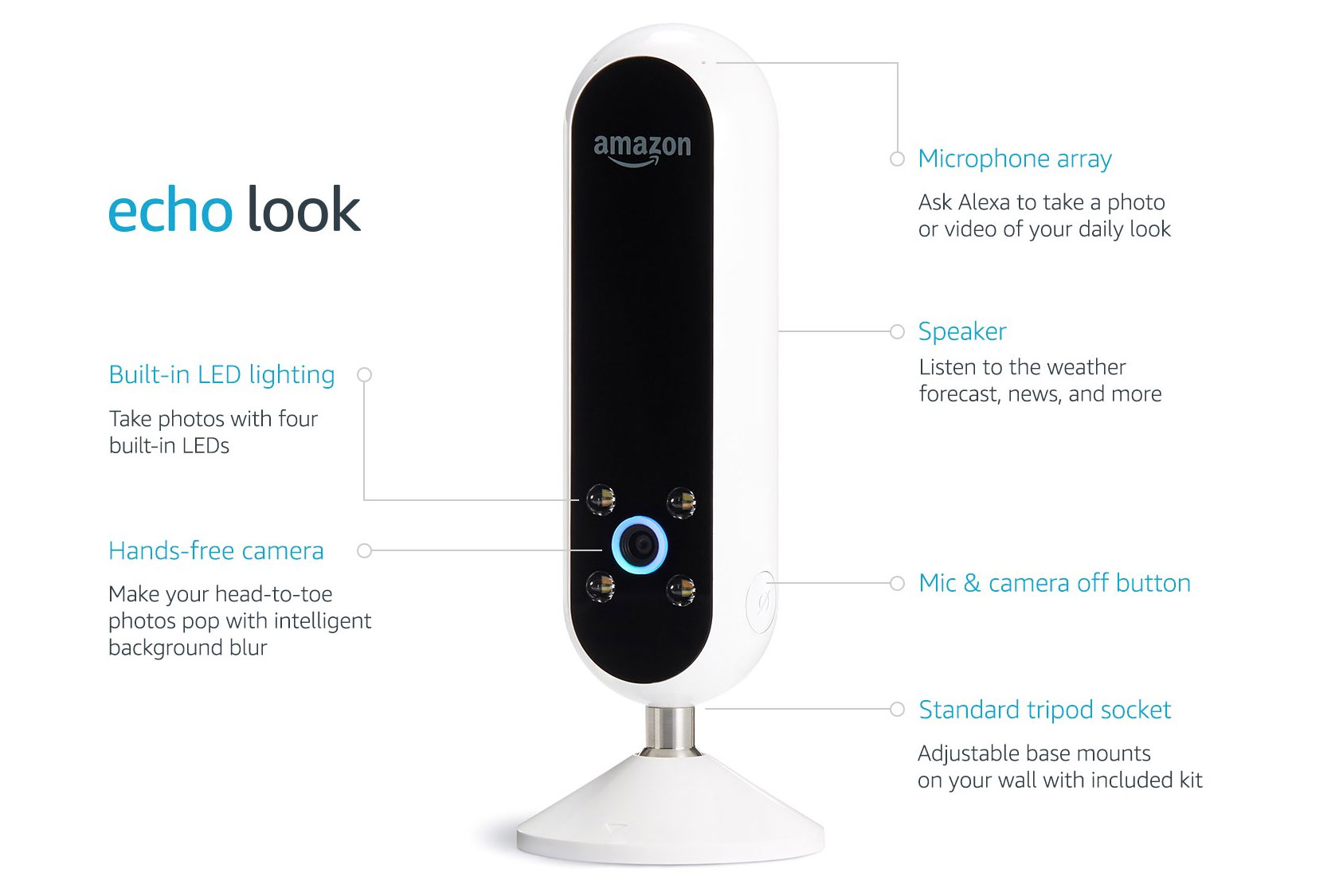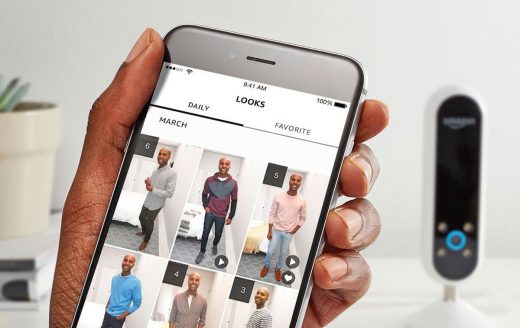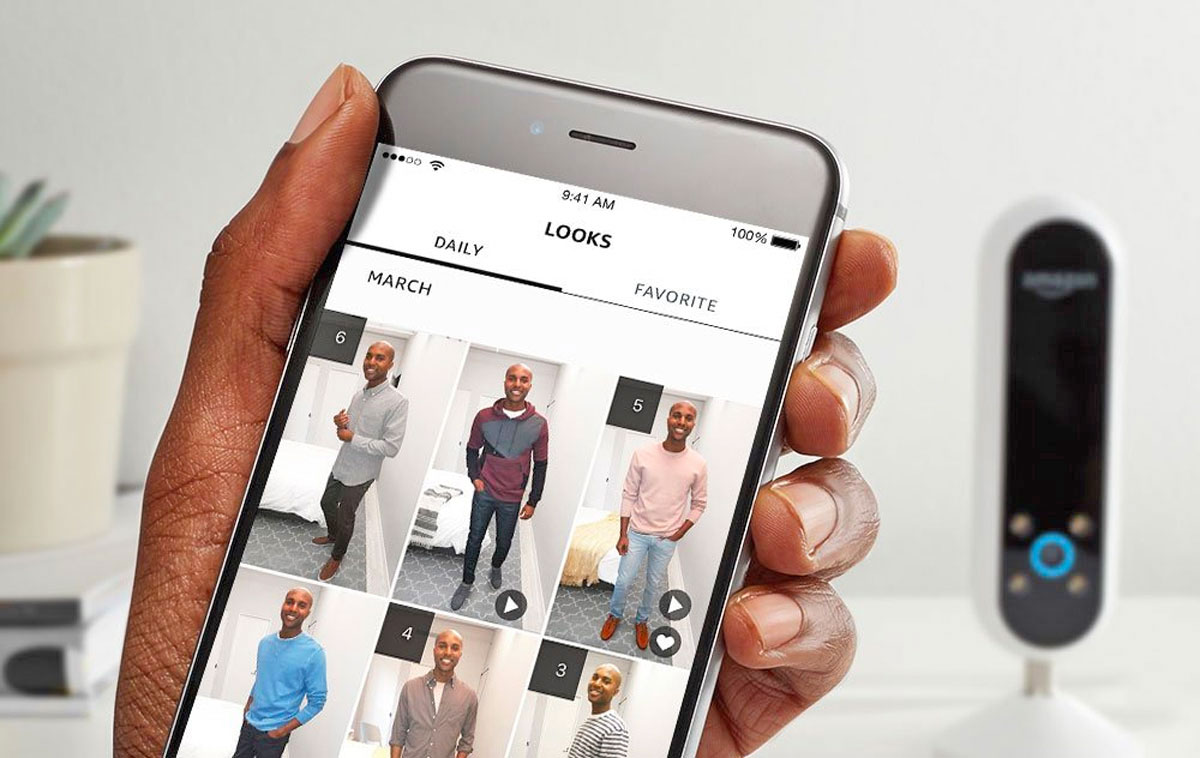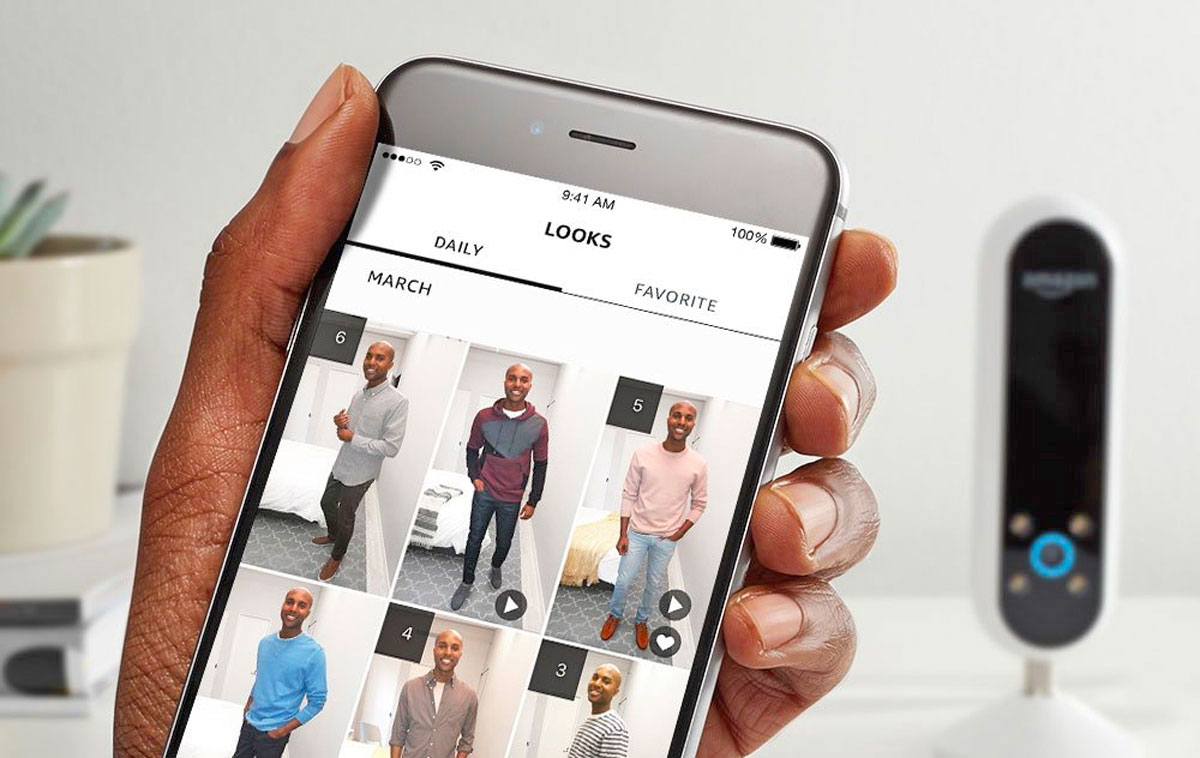Why Amazon wants to replace your mirror with a camera
Years ago, if someone told you she was buying a camera for her bedroom, you’d imagine she was planning something naughty. But times have changed, and Amazon believes you’ll spend $200 on a camera that’s both an extension of your smart home and the ultimate fashion accessory. The Echo Look is designed to help you look your best every morning, guiding and improving your style every time it’s used. But what it represents, and what Amazon gets out of it, could be a much bigger deal for the future of fashion.
Echo Look resembles pretty much every other smart home security camera you’d care to find, but it’s not about protecting your property. The unit is designed for fashionable types who like to document their daily outfits and make sure that they’re always looking good. Look comes with a depth-sensing camera, bolstered with four LEDs that turn even the dingiest bedroom into a half-decent photo studio.
If you take a selfie in a full-length mirror before leaving the house each morning, then the Echo Look is its modern-day replacement. Rather than holding a phone across your body, you can simply speak and ask the device to take a picture for you. The unit is voice activated and comes with Amazon’s chatty computing platform, Alexa. In addition, the depth-sensing camera will automatically blur the background to hide how messy your place is.
Now, this sort of setup won’t be good enough for hard-core Instagram types and fashion bloggers, of course. Those folks often have lighting rigs and DSLRs and edit their images before uploading them to social media. But if you’re just in the habit of sharing your outfit choices on the internet, then you’ll find that job much easier with the Echo Look than it was before.
Because the Look comes with Alexa, it pulls double duty as a Trojan horse to get Amazon’s voice-control platform into your bedroom. If you’ve already spent big on an Echo, you’ve probably left it in the family room or kitchen, where you’d get the most use out of it. Those who’ve yet to find a reason to jump onto Amazon’s bandwagon may find Alexa a nice extra feature.
The other half of Echo Look’s sales pitch is Style Check, a feature that builds on the company’s Outfit Compare platform to keep your “look on point using advanced machine learning and advice from fashion specialists.” Simply submit two snaps of you wearing different outfits and the system will tell you which one looks best. It does that by crunching what’s trending, what fashion experts are saying, how well it fits you and what colors are in season.
Amazon is, of course, storing every single one of those images, along with hundreds of pieces of contextual information. That data will be constantly crunched not only to understand what style suits you but also what outfits you pick depending on weather, mood or season. In addition, the information will be used to train a machine learning system that can offer better suggestions for every Echo Look user.
Echo Look will also enable Amazon to start tracking customer habits in ways that the fashion industry will envy. After all, most clothing retailers have no clue if their products are worn once or every day. Meanwhile, retailers with loyalty schemes — like Target — can predict purchasing outcomes based on repeated custom. But most people don’t buy scarves every week, so retailers have no idea if their products are successful in the real world.
Since Amazon will store and track every outfit image you send it, it’ll determine what products are getting lots of repeated use. So Jeff Bezos and friends will know what outfits, styles, patterns and brands you already like and offer similar suggestions. In addition, Amazon might be able to work out when your everyday-use biker jacket starts showing signs of wear and offer up a discounted replacement.
Smart Mirrors are hugely expensive. You know what isn’t expensive? An AR clothes platform that Amazon can get its users to pay for in their own homes.
Traditional brick-and-mortar retail is having its lunch eaten by the internet, and Amazon has led that charge for decades. Twenty years ago, Main Street would have had a couple of bookstores, a DVD or games emporium and a place to buy electronics. Even grocery shopping is changing with the Dash button, as Amazon eats into purchases for laundry detergent and toilet paper.
But fashion retail is a tougher nut to crack, since there’s still a preference by some people to go into stores and try before they buy. A 2015 survey by analysis firm TimeTrade found that more than 85 percent of consumers prefer to shop in stores. This is for a variety of reasons, including a desire to feel the product, a dislike of waiting for shipping and because they value human advice.
For the past century, at least, there have been ways to shop without visiting stores, either with catalogs or, these days, going online. Products are ordered and mailed to you, with you returning the ones that don’t fit or aren’t right. The shipping and returns are often free or at negligible cost, since they’re still cheaper than renting and staffing a brick-and-mortar store. But it’s still a burden, since those companies have to overbuy inventory and spend big sums on shipping.

Online stores have a huge advantage in that their inventories can be almost limitless compared to the space constraints of a real store. Retailers have belatedly woken up to this threat by building and installing smart mirrors in their flagship stores. These devices are often used as an attraction, enabling people to use an augmented reality overlay to “try on” outfits that aren’t available in store.
But smart mirrors require time and space to set up and are hugely expensive, and you can only have a couple in store. You know what isn’t expensive? An AR clothes platform that Amazon can get its users to pay for to have in their own homes. There, all they have to do is snap themselves in their underwear and their smartphone will let them “try on” pretty much every piece of clothing on sale in the whole country.
We know that AR is going to be hugely important, and Apple, Microsoft, Facebook and startups like Magic Leap are all working on it. Amazon has already dipped its toe into AR with products like Flow, which was designed as a way for people to identify products to buy without bar codes. Using a depth-sensing camera to clock customers’ measurements and overlaying outfits onto them makes perfect sense.
Amazon has had envious eyes pointed toward the clothing retail market for a while. Amazon Fashion pushed a $15 million ad campaign over the 2016 holiday season to highlight its new in-house clothing lines. These marques, called things like Franklin & Freeman, North Eleven and Scout + Ro, are designed to look like fashion brands in their own right.
But all of these are just toes in the water compared to what Amazon could do when it begins to join up these ideas. It is building fashion brands and learning how to make its own clothes quickly and efficiently. It already has a logistics platform that can deliver goods to people in less than a day. Now it will begin documenting the vital statistics and shopping preferences of every one of its customers who owns an Echo Look.
It’s the depth-sensing camera that’s the giveaway, since that technology is clearly going to become vital. Brooks Brothers, for instance, already harnesses the powers of depth-sensing technology to tailor shirts for its customers. Feetz is doing a similar job to create custom-made, 3D-printed shoes for people with problematic feet.
Clearly, the end goal is to have a system whereby Amazon can produce tailored clothes with custom sizing and next-day shipping. At that point, you’d have to wonder why you’d bother trekking down to Nordstrom, Barney’s or Bloomingdale’s for an on off-the-shelf number. Or not, because while Amazon may not reveal how many people buy its Kindle readers and Echo products, Echo Look could be a Fire Phone-esque dud. Only the future knows for now.
(48)





